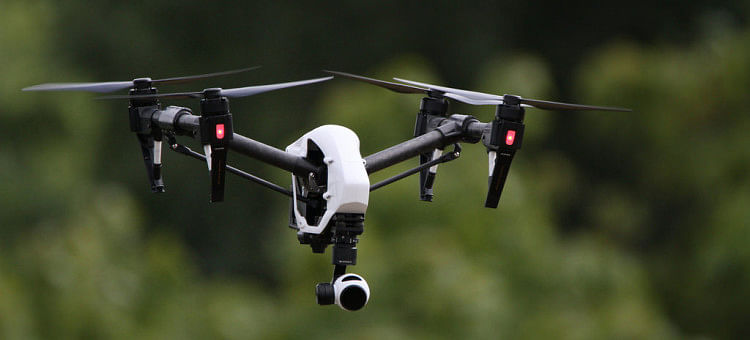
In recent years, the use of drones for recreational purposes has proliferated across Singapore due to the growing affordability as well as enhanced functionality of these drones.
This includes the trend of capturing cinematic overhead shots with the use of drones for your pre-wedding shoot and actual wedding day celebrations.
However, several privacy and security concerns have inevitably arisen among the public.
This has spurred Parliament to enact the Unmanned Aircraft (Public Safety and Security) Act 2015 (which amends the Air Navigation Act and the Public Order Act) in response to some of these issues.
This article offers several tips on how to “hover” within the law, while highlighting some of the notable relevant laws.
Get permits to operate your drone (where applicable)
You are required to obtain permits from the Civil Aviation Authority of Singapore (“CAAS”), unless the operation of your drone falls under any of the following categories:
- Your drone is, or flies entirely, outside of Singapore .
- Your drone (i) is flown entirely indoors either at a private residence or at an experimental site which is used in relation to the construction or testing of that drone; and (ii) does not discharge anything (be it in gaseous, liquid, or solid form).
- Your drone (i) does not exceed 7 kilogrammes in weight; (ii) is flown outdoors at a height not exceeding 200 feet (c. 60.96 metres) above mean sea level; (iii) is flown for recreational or research purposes; (iv) is flown outside any restricted area, danger area, or any area within 5 kilometres of any aerodrome; (v) is flown outside any protected area; and (vi) does not discharge anything.
For more details on some of the relevant permits, refer to our guide on the specific drone legislation.
Note that the carriage of dangerous materials on drones is strictly prohibited.
Seek consent when taking photographs or videos with your drone for commercial purposes
While the key provisions in the Personal Data Protection Act 2012, i.e., Part III and IV, are not applicable to recreational drone operators acting in a personal or domestic capacity, they are applicable to freelance operators who use their drones for commercial purposes, e.g. wedding photography.
If you belong to the latter category, before you take any photos or videos with your drone, you should seek the consent of individuals who would appear in, and be identifiable from, your photos or videos. This consent can either be actual consent or deemed consent.
-
Actual consent: You may get these individuals to sign consent forms, which should expressly state the purpose for the collection, use or disclosure of their personal data.
-
Deemed consent: You may place notices informing people within a vicinity that photos or videos may be taken of them within that area. While this option is clearly more practical, you should make efforts to ensure that such notices are prominently displayed within the area and are sufficiently brought to people’s attention.
Should any individual inform you that he or she does not consent to the collection of his or her personal data, you may consider not capturing this individual in your photos or videos. However, there may be occasions where it is impracticable to omit numerous individuals, who have not given consent, from your shots. In such situations, you may consider (a) adjusting the focus of your camera lens (e.g. blurring out the background where those individuals are, and instead focusing elsewhere); (b) not taking frontal shots of these individuals; and/or (c) taking your shots from afar. As long as the personal features of these individuals are indiscernible, you will likely be able to include them in your shots without having to incur legal liability.
Operate your drone with care and caution
The following are several things to note when you are operating your drone:
- The drone should not be operated in a way that you know or ought reasonably to know “(a) could endanger the life of another person; or (b) could endanger the person or the property of another person” .
- It should not cause any material damage or loss to any person or property, in flight or by any article falling from your drone. Therefore, it is paramount to secure any “add-on” parts, such as cameras, firmly to the drone.
- It should not be “flown in such a manner as to be the cause of necessary danger to any person or property on land or water”.
- It should be “at a height above the ground which, having regard to wind, weather, and all the circumstances of the case is reasonable”. That said, should your drone fly above 200ft, you would be required to get the relevant permits from the CAAS.
- Your drone should not cause private nuisance, e., interfere with a person’s use and enjoyment of his or her land, or cause public nuisance, i.e., cause annoyance to the public. Therefore, you should be cautious if your drone is equipped with flashing lights or emits loud noise.
It might seem as if the numerous laws and regulations raised above are restrictive and even stifling. However, upon closer scrutiny, you would realise that many of them would only apply if your drone is used for commercial purposes or is flown over certain demarcated areas. Therefore, if you are a drone enthusiast, all hope is not lost, as long as you “hover” within the law.
Sources
- Air Navigation Act (Cap 6, 1985 Rev Ed)
- Air Navigation Order (Cap 6, O 2, 1990 Rev Ed)
- Malcomson Nicholas Hugh Bertram and Another v Naresh Kumar Mehta [2001] SGHC 308
- Penal Code (Cap 224, 2008 Rev Ed)
- Personal Data Protection Act 2012 (Act 26 of 2012)
This article was first published in Singapore Legal Advice.

